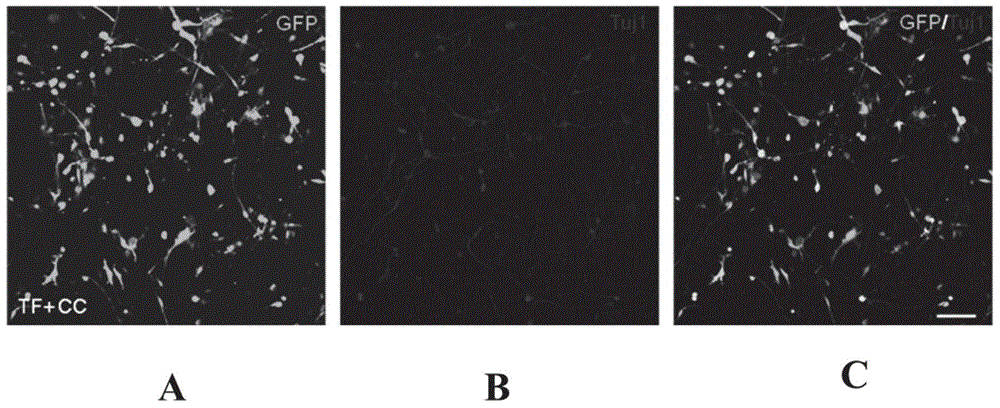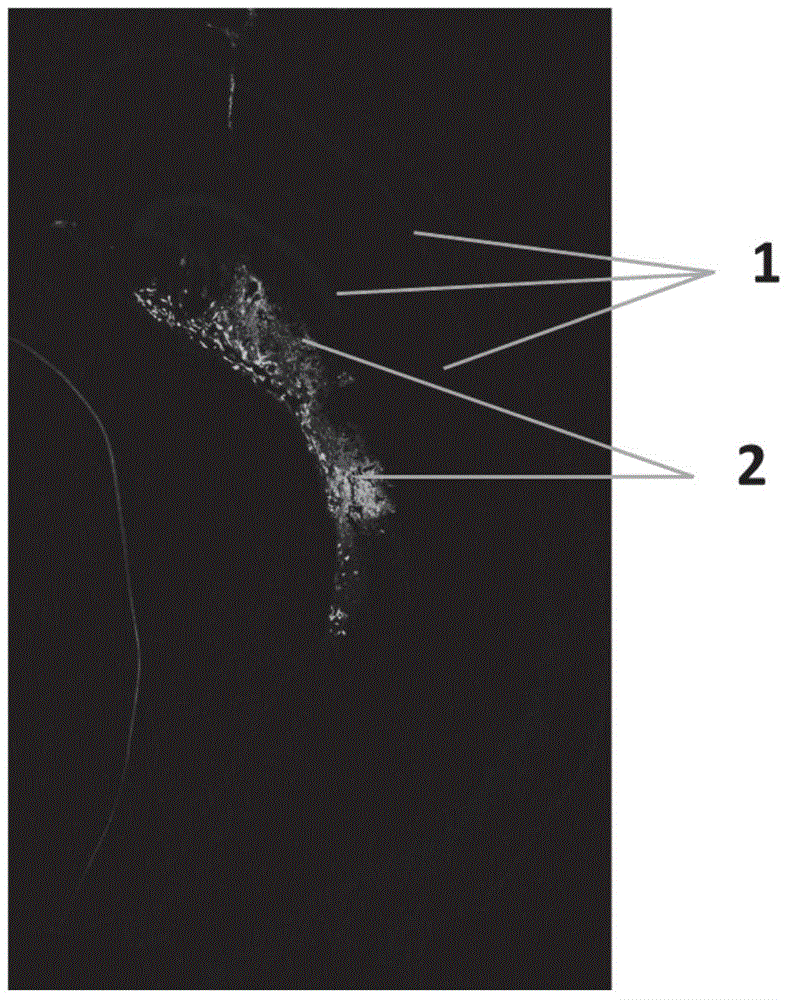Method for inducing fibroblasts into neuronal cells by transdifferentiation and application of fibroblasts
A neuron cell and fibroblast technology, which is applied in the fields of biotechnology and neurodevelopment, can solve the problem of inability to efficiently obtain inhibitory neurons, and achieve the effect of improving memory and efficient acquisition.
- Summary
- Abstract
- Description
- Claims
- Application Information
AI Technical Summary
Problems solved by technology
Method used
Image
Examples
Embodiment 1
[0053] Example 1 Inducing fibroblasts to transdifferentiate into PV neurons
[0054] Specific experimental process:
[0055] 1) Adenovirus vector construction: the Ascl1 gene was constructed into the adenovirus pAD vector by BamHI+EcoRI double enzyme digestion, and the virus packaging and virus titer were measured respectively;
[0056] 2) Preparation of mouse fibroblast cells: select 14.5-day mouse embryos, remove the head, tail, spine, viscera and gonads, take skin tissue, digest with 0.5% trypsin for 5 minutes, and take the digested skin tissue Spread the fibroblasts into a 10 cm culture dish with DMEM plus 10% fetal bovine serum, culture them, and passage them once after 2 days to finally obtain fibroblasts;
[0057] 3) Virus infection: Spread 60,000 fibroblasts into one well of a 24-well plate, infect the fibroblasts with packaged Ascl1 adenovirus particles, and replace with neuron medium (DMEM, 1×B -27, 10 μg / ml BDNF), add the small compound FSK (10 μM) to the neuron...
Embodiment 2
[0062] Example 2 Transplantation of PV nerve cells to treat epilepsy
[0063] Specific experimental process:
[0064] 1) Establishment of epilepsy mouse model. By intraperitoneally injecting pilocarpine (280 mg / kg) into 6-week-old adult C57 mice, 2 weeks after the drug injection, the epilepsy mouse model was induced. The mice in this experiment were divided into 3 groups, including a group of 10 normal mice, a group of 10 epileptic mice, and a group of 10 transplanted nerve cells to epileptic mice.
[0065] 2) Transplantation of nerve cells. Transplant 50,000 nerve cells into the hippocampus of the mouse brain through stereotaxic and microinjection systems.
[0066] Specific location of mouse hippocampus: Use a positioning needle to locate a point 2mm behind bregma and 2.5mm beside the sagittal suture, which is the plane position of the hippocampus, and then use a drill needle to drill a small round hole on the skull at this point .
[0067] Transplanted cells: the hipp...
PUM
 Login to View More
Login to View More Abstract
Description
Claims
Application Information
 Login to View More
Login to View More - R&D
- Intellectual Property
- Life Sciences
- Materials
- Tech Scout
- Unparalleled Data Quality
- Higher Quality Content
- 60% Fewer Hallucinations
Browse by: Latest US Patents, China's latest patents, Technical Efficacy Thesaurus, Application Domain, Technology Topic, Popular Technical Reports.
© 2025 PatSnap. All rights reserved.Legal|Privacy policy|Modern Slavery Act Transparency Statement|Sitemap|About US| Contact US: help@patsnap.com



